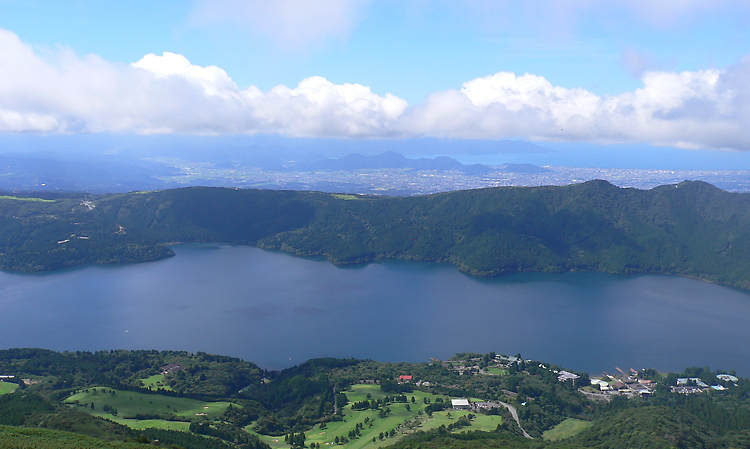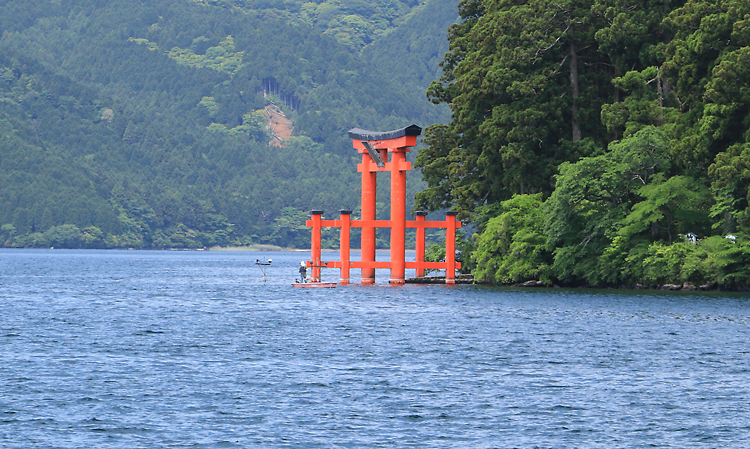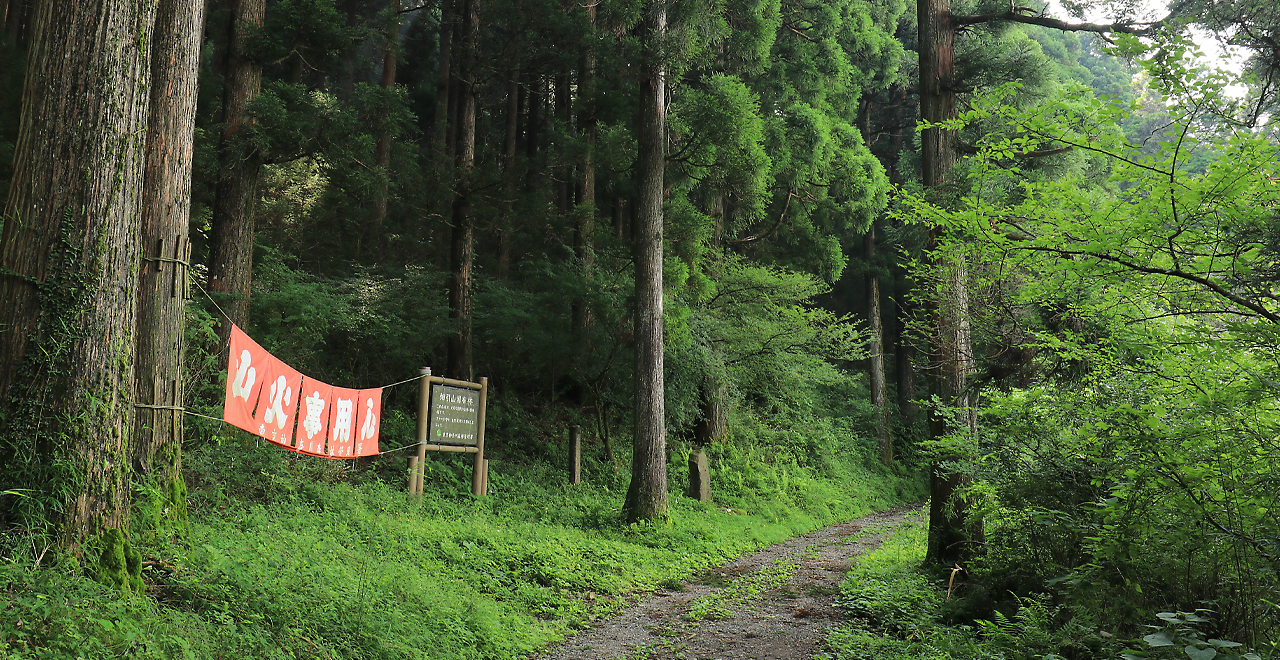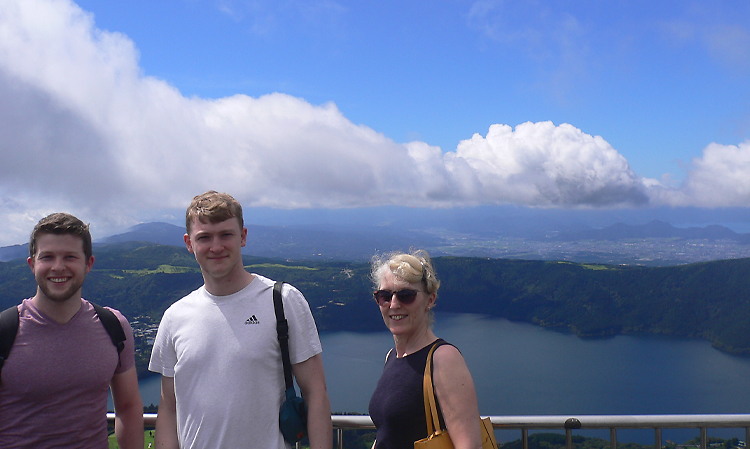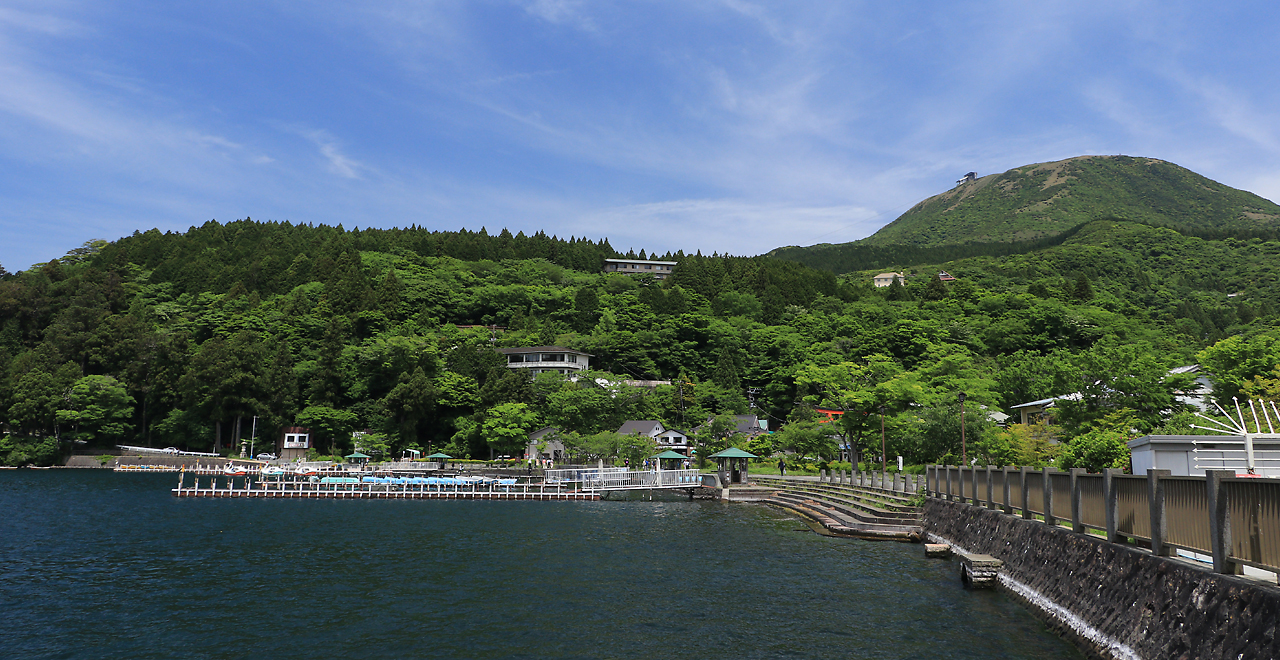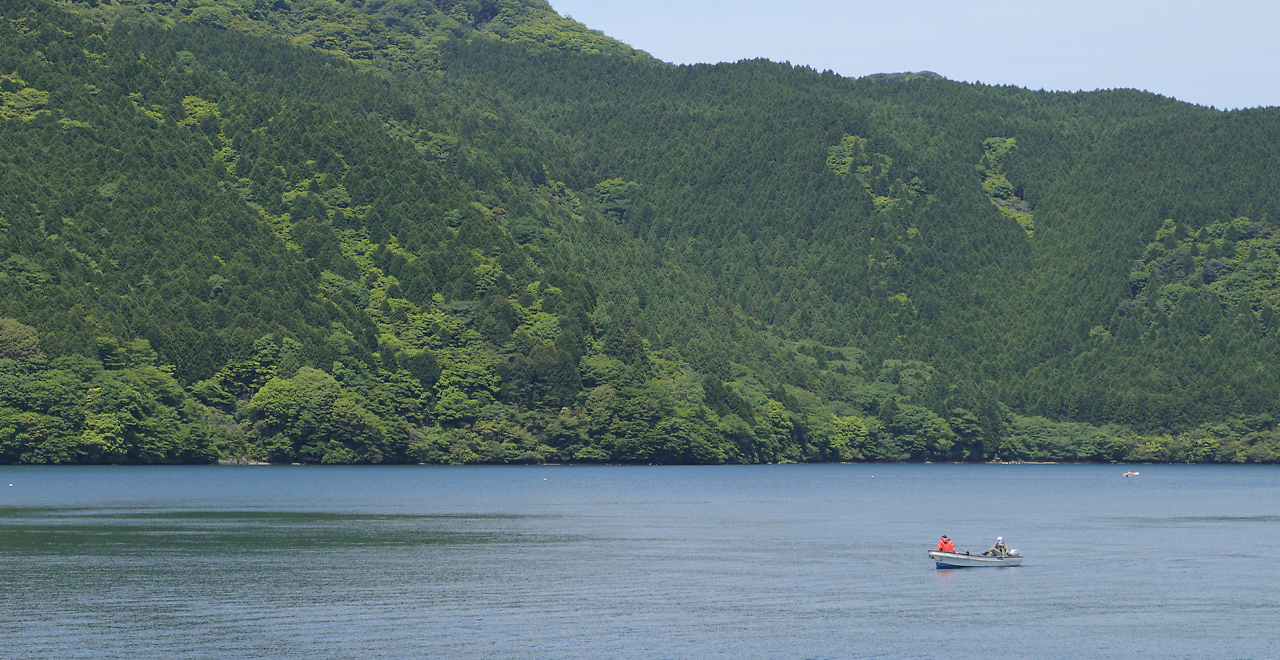Ashinoko (Lake Ashinoko) Recreation Forest
434.71ha
Elevation Lowest: 728 m / Average: 750―900 m / Highest: 1,356 m
Lake Ashinoko and forests forming spectacular scenery with Mt. Fuji
Lake Ashinoko and forests forming spectacular scenery with Mt. Fuji
- Newest information
- Area
- Activities
- Overview
- Latest Information
- Usage Guide
- Facility
- Map
- Location
- Access
(Distances and times are
provided as a guide only) - Management office
contact details - Information on Other Local
Tourist Attractions - Official Tourist Information
- Recreation Forest
Management Committee - Supporters
- Other
- Newest information
- Gathering information in advance is important to safely enjoy forest recreation that brings you closer to nature.
・CHECK
・When you go out, please check local tourist and related information and gather information on road closures, weather conditions, etc.
- Area
- Kanto
- Activities
- Flower-viewing(cherry (Prunus))(Outside the forest) Autumn leaf viewing (Includes surrounding area) 1 location Waterfall viewing (Outside the forest) Birdwatching (Includes surrounding area) Picnics (lawn area/park) (Outside the forest) Fishing (lake) (Includes surrounding area) Canyoning (River trekking) (Outside the forest) Bicycle rental(Outside the forest) Hands-on forestry / woodworking experience (Outside the forest) Forest therapy (therapy center) (Outside the forest) Shrine / Temple (Outside the forest)
- Overview
-
- Geographical/topographical features
- This Recreation Forest is located in an area comprising the central cone and outer rim of the Hakone volcano. The area of the central cone around Mt. Komagatake consists mainly of natural forests of broad-leaved trees that are more than 100 years old.
The west bank of Lake Ashinoko at the outer rim of the volcano mostly consists of forests of planted trees that are also more than 100 years old. - Historical/cultural features
- Lake Ashinoko is thought to have taken its present form about 3,000 years ago.
The steep caldera wall of the outer rim of Hakone volcano is visible at the west side of the lake, and a landscape formed by lava flows from Mt. Komagatake can be seen at the east side.
According to legend, Mangan Shonin, the Buddhist priest who built Hakone-jinja Shrine, calmed Kuzuryu, a nine-headed dragon said to have lived in the lake, in the 8th century.
Ever since, Lake Ashinoko has been venerated as Hakone-jinja Shrine's sacred lake.
The west bank of Lake Ashinoko was burned and converted to a bare grass field in the Edo period (early 17th to late 19th century) to ensure that all incoming and outgoing travelers would be checked by the Hakone Sekisho (highway checking station).
However, in the Meiji period (late 19th to early 20th century), an imperial villa was built at the current location of Onshi-Hakone Park as a summer retreat for the imperial family and as a place where guests from overseas could be welcomed. In order to improve the view of the west bank from the imperial villa, the reflections of the mountains on the lake surface, and the scenery in the Shirahama direction, efforts were made for 30 years to plant Hinoki (Japanese cypress (Chamaecyparis obtuse)) trees, while mixing broad-leaved trees as appropriate.
They have now grown into a beautiful forest that is a mix of over 100-year-old Japanese cypress trees and broad-leaved trees such as Yamamomiji (Acer palmatum var. matsumurae).
Mt. Komagatake, with its ropeway, rises on the east side of Lake Ashinoko.
It is said to have been a sacred site in ancient times for the worship of Mt. Kamiyama, a mountain where a god was believed to reside.
Hakone-jinja Shrine's interior shrine, "Hakone-jinja Shrine Mototsumiya," stands on the summit of Mt. Komagatake.
Lake Ashinoko and Hakone-jinja Shrine etc. were recognised as a Japan Heritage Site in Fiscal Year 2018 (Heisei 30) as a ‘A Perilous Mountain Pass on the Kyoto-Tokyo Highway’. - Climate, flora and fauna
- Lake Ashinoko is located at a relatively high elevation in the Hakone area, and its climate is humid throughout the year and often cloudy from April through late September.
Temperatures are 3°C to 4°C cooler than in lower-elevation Hakone Yumoto, making the area comfortable in the summer despite the high humidity. Temperatures drop to near -5°C in the winter, but the weather is generally sunny, and visitors can enjoy breathtaking views of snow-capped Mt. Fuji and Lake Ashinoko.
Hakone’s extremely diverse plant communities make it almost a miniature garden. There are forests of Buna (Japanese beech (Fagus crenata Blume)) trees on Mt. Kamiyama, Mt. Daigatake and Mt. Mikuni, Momi (fir (Abies firma)) groves on parts of the outer rim of the volcano on the Yugawara side, wind-beaten shrubs and grasslands on Mt. Komagatake and Mt. Kintoki, groves of Sugi (Japanese cedar (Cryptomeria japonica)) and Japanese cypress planted on the west bank of Lake Ashinoko and on the outer wall of the outer rim of the volcano.
Plant clusters also grow in unique locations, such as around fumaroles in Owakudani and Yunohanazawa or in the Sengokubara Marshlands. The number of plant varieties exceeds 1,800.
The area is also home to a wide variety of animals with "Hakone" in their names, such as Hakone-sanshouo (Japanese clawed salamander (Onychodactylus japonicus)), Hakone-ashinagakogane (Hoplia (Hoplia) hakonensis Sawada) and Hakone-tsunozemi (Gargara doenitzi). - Attractions
- The major features of this Recreation Forest are Mt. Komagatake, which boasts superb views, and Lake Ashinoko, which symbolizes Hakone. The natural beauty of the early-summer verdure and of the autumn-colored leaves and the graceful image of Mt. Fuji reflected on the surface of Lake Ashinoko are particularly magnificent.
The Recreation Forest has a ropeway to the summit of Mt. Komagatake.
At the summit, visitors can not only feel the presence of history at Hakone-jinja Shrine Mototsumiya, but also observe plants such as Shimotsuke (Japanese meadowsweet (Spiraea japonica L. fil.)), Torikabuto (monkshood (Aconitum L.)), Hotarubukuro (Campanula punctata) and chestnut tiger, a famous migratory butterfly. A large number of tourists visit the area throughout the year.
The summit of Mt. Komagatake offers stunning panoramic views of all of the Hakone mountains, Mt. Fuji and Sagami and Suruga Bays. Also, a sea of clouds can sometimes be seen from November to January.
Meanwhile, hikers can see rare plants endemic to the Hakone area along the footpaths on the west bank of Lake Ashinoko.
Hikers can also easily relax and refresh themselves after hiking at one of the many day onsen facilities available nearby.
- Latest Information
-
- Regular events
- Lake Ashinoko Lake-opening Ceremony (January)
Kosui Festival (July)
Gojinko-sai Festival (August)
Kojiri Dragon Festival (August)
Festival of the Burning Shrine Gates and Floating Lanterns (August) - Facility fees are subject to change.
- Usage fees of facilities, etc. are subject to change, so please check their websites for the latest information.
- Warnings (Flora and fauna)
- Some of the mushrooms that grow in the forest are dangerous, so do not taste any at your own judgment, under any circumstances.
- Warnings (Dangerous areas)
- Some footpaths can be treacherous in places, so please exercise caution while walking. The Hakone volcano is active, so caution is required.
- Usage Guide
-
- Entrance fee
- None for the Recreation Forest itself, but a fee is required to ride the ropeway in the forest (adults 1,000 yen and children 500 yen one-way).
- Operating hours and seasons
- Accessible 24 hours a day, 365 days a year.
However, the ropeway operates from 9am to 4: 30pm. - Accommodation options
- (Outside the forest) About 5 Japanese inns and hotels
- Facility
- Toilets and drinking fountains (Includes surrounding area) 1 location Toilet (accessible)(Outside the forest) Walking trail (Includes surrounding area) 1 location Walking trail (accessible)(Outside the forest) Parking lot (Outside the forest) Observation platform (1 location) Visitor center (staffed only)(Outside the forest) Vending machine (Includes surrounding area) Shop (Includes surrounding area) 1 location Restaurant (Includes surrounding area) Campsite and/or cabins (Outside the forest) Free public wireless LAN (Wi-Fi) (Outside the forest) Botanic garden (Outside the forest) Museum (Outside the forest) Cultural Property (nationally designated) (Outside the forest) Accommodation facilities (Hotels/Japanese inns) (Outside the forest) Hot Spring (Outside the forest)
- Map
- Location
- Moto-Hakone, Hakone Town, Ashigara-Shimo County, Kanagawa Prefecture
- Access
(Distances and times are provided as a guide only) -

-
Parking lot capacity / parking charges- ・Hakonemachi Enchi Parking Lot
- Free parking for about 80 vehicles
- ・Hakone Sekisho Tabimonogatarikan Parking Lot
- Parking for about 39 vehicles
- (free on weekdays during the off-season; fee required on weekdays during the season and on Saturdays, Sundays and national holidays)
- Nearby tourism facilities
- ・Hakone Sekisho-ato
- (5 minutes on foot from the Hakonemachi-ko bus stop)
- ・Hakone Ekiden Museum
- (2 minutes on foot from the Hakonemachi-ko bus stop)
- ・Hakone Sightseeing Cruise
- (1 minute on foot from the Hakonemachi-ko bus stop)
- Management office contact details
-
Tokyo/Kanagawa District Forest OfficeTEL:0463-32-2867
- Information on Other Local Tourist Attractions
-
Hakone Onsen Public Guide Best Selection of Hotels at Hakone "Hakopita" (External link / Hakone Onsen Ryokan Hotel Cooperatives)
- Official Tourist Information
-
Hakone Tourist Association [External link]
- Recreation Forest Management Committee
- ー
- Supporters
- ー
- Other
-
 Japan Heritage: A Perilous Mountain Pass on the Kyoto - Tokyo Highway - [External link]
Japan Heritage: A Perilous Mountain Pass on the Kyoto - Tokyo Highway - [External link]








